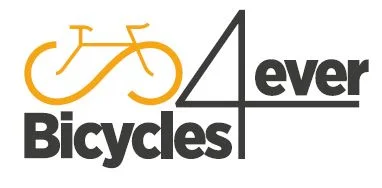Are your Handlebars too High or Low? (Bike Fitter explains) with Road Cycling Academy
Source: Road Cycling Academy Youtube Channel: Are your Handlebars too High or Low? (Bike Fitter explains)
Video Are your Handlebars too High or Low? (Bike Fitter explains) with Road Cycling Academy
Video Are your Handlebars too High or Low? (Bike Fitter explains) with Road Cycling Academy YouTube Channel.
Are your Handlebars too High or Low? (Bike Fitter explains)
Heading 1: Road Cycling Academy
Subheading H2: Finding the Right Stem Height for Your Road Bike
When it comes to road cycling, finding the right stem height for your bike is crucial for ensuring proper posture and comfort. Many cyclists often wonder how high their handlebars should be, but there is no one-size-fits-all answer. Instead of looking for a magical number, it’s important to focus on the posture of the rider. In this article, we will explore the key factors to consider when determining the ideal stem height for your road bike.
Subheading H3: Understanding Posture and Positioning
The posture of a rider is crucial when it comes to finding the right stem height for a road bike. One of the best ways to gauge your posture is by observing yourself in a mirror while on your bike. This can help you identify the positioning of your shoulders, elbows, and neck, all of which play a significant role in determining the ideal stem height. When a rider is pedaling at a moderate pace, it is important to have minimal weight on the hands, with a slight incline forward, and a comfortable bend in the elbows. This balanced position serves as a good starting point for assessing the overall posture and positioning on the bike.
Subheading H3: Finding the Right Balance
To accurately assess the stem height, it is crucial that the back end of the bike is also properly adjusted. This includes ensuring that the seat height and position are optimal, allowing the rider to be well-balanced on the pedals. Without a balanced back end, it can be challenging to accurately gauge the postural changes that occur when adjusting the stem height. Therefore, ensuring that the back end of the bike is well-adjusted is a critical step before determining the ideal stem height.
Subheading H2: Assessing Shoulder and Elbow Posture
When it comes to finding the right stem height, the posture of the shoulders and elbows is a key indicator. While observing your posture in a mirror, take note of the level of bend in your elbows. If the handlebars are too low, you might notice yourself locking your elbows and bracing onto the front end of the bike. Conversely, if the handlebars are too high, you may find yourself trying to subconsciously drop your torso between your shoulder blades. These are clear indicators that the stem height is not optimal and adjustments need to be made to achieve a more natural and comfortable posture.
Subheading H3: Recognizing Signs of an Imbalanced Posture
It’s important to recognize the signs of an imbalanced posture, as they can provide valuable insights into the appropriate stem height for a road bike. If you find yourself preferentially riding in the drops, it could be a sign that the handlebars are too high. On the other hand, consistently sitting up on the tops and protracting your scapulas around your chest wall could indicate that the handlebars are too low. By paying attention to these behavioral cues, you can gain a better understanding of how to adjust the stem height for a more harmonious and comfortable riding position.
Subheading H2: Addressing Neck Extension
In addition to shoulder and elbow posture, it’s important to consider the range of neck extension when determining the ideal stem height. A well-balanced and comfortable riding position should allow for adequate neck extension, enabling the rider to look down the road 20-30 meters ahead. If the handlebars are too low, the rider may run out of neck extension, leading to discomfort and potential neck pain. Conversely, overly high handlebars might not provide enough stretch for the neck, leading to similar discomfort. Therefore, neck extension serves as a key factor to consider when adjusting the stem height for a road bike.
Subheading H3: Addressing Secondary Limitations
In some instances, the neck may present a secondary limitation to the stem height, independent of shoulder and elbow posture. If the base of the neck becomes sore after riding for a moderate period, it could indicate that there is a postural issue impacting the rider’s comfort. Stretching exercises can be utilized to improve neck extension and alleviate discomfort. By addressing secondary limitations such as neck pain, riders can optimize their riding posture and ensure a more enjoyable experience on the road.
In conclusion, finding the right stem height for a road bike is a crucial aspect of achieving a balanced and comfortable riding position. By focusing on posture, shoulder and elbow positioning, and neck extension, riders can make informed adjustments to their stem height, enhancing their overall comfort and performance on the road. While there is no magical number to determine the ideal stem height, closely observing posture and behavioral cues can provide valuable insights for achieving the perfect fit for a road bike. Thank you.
The opinions expressed in this space are the sole responsibility of the YouTube Channel Road Cycling Academy and do not necessarily represent the views of CicloNews.

